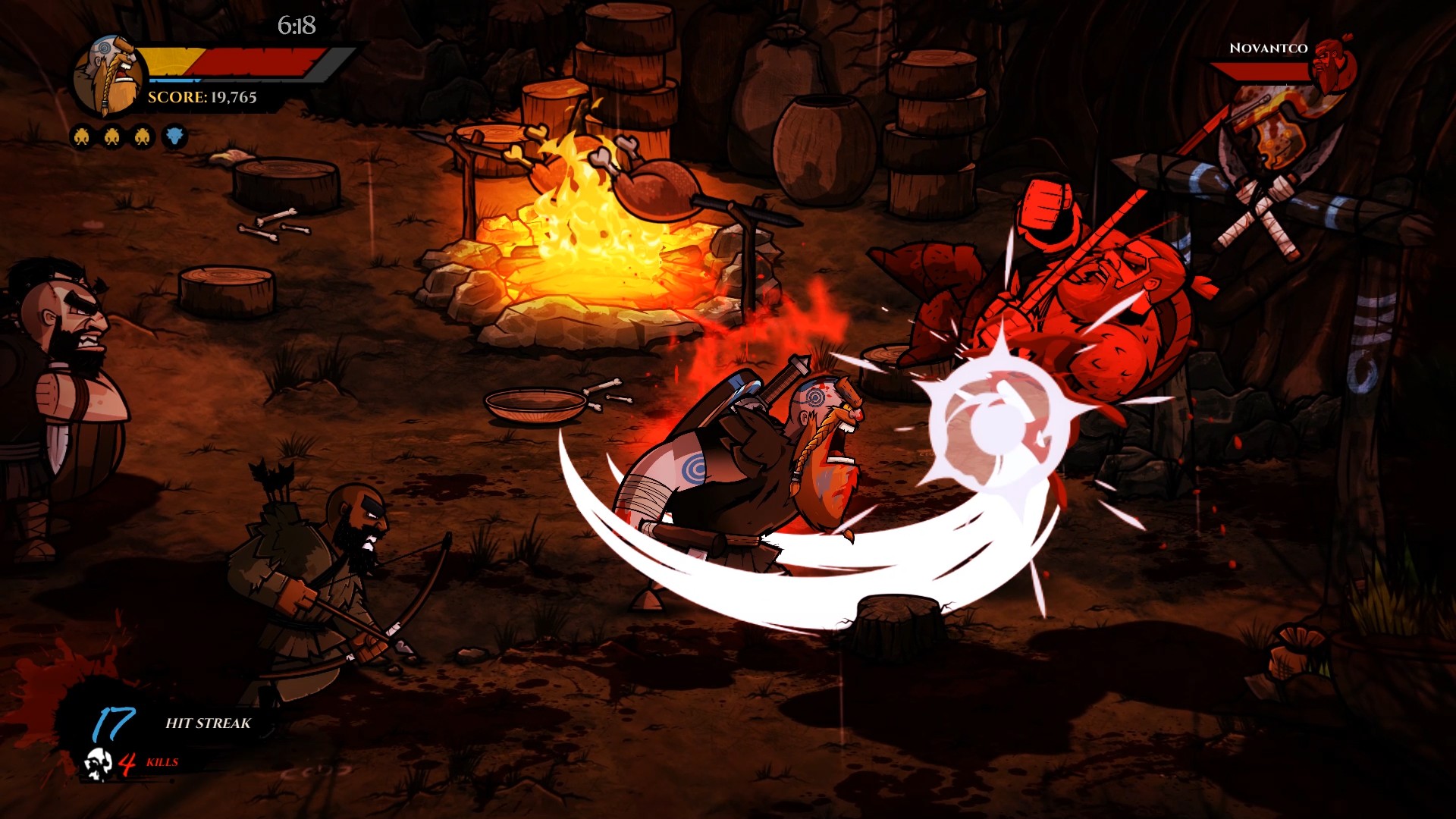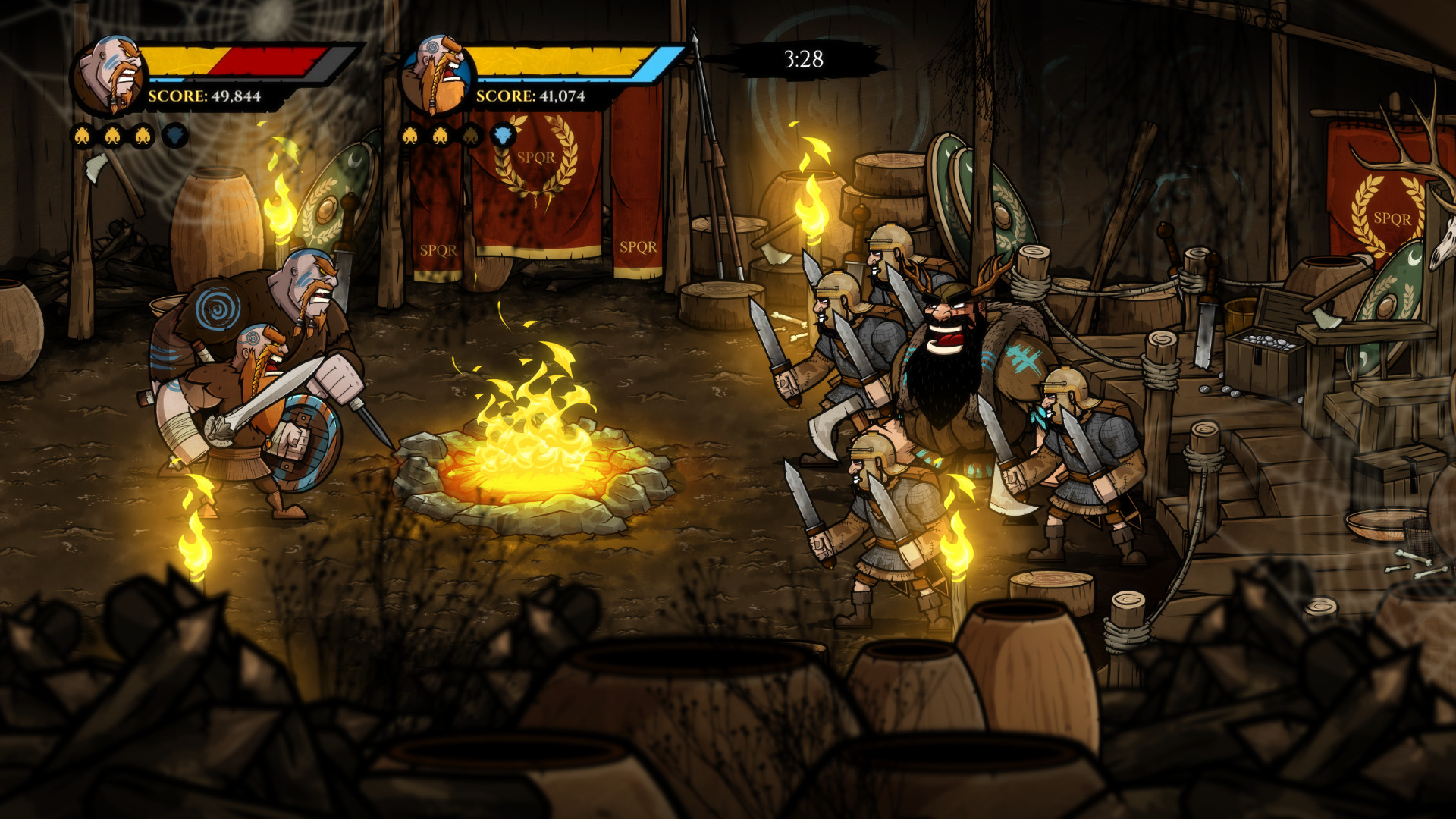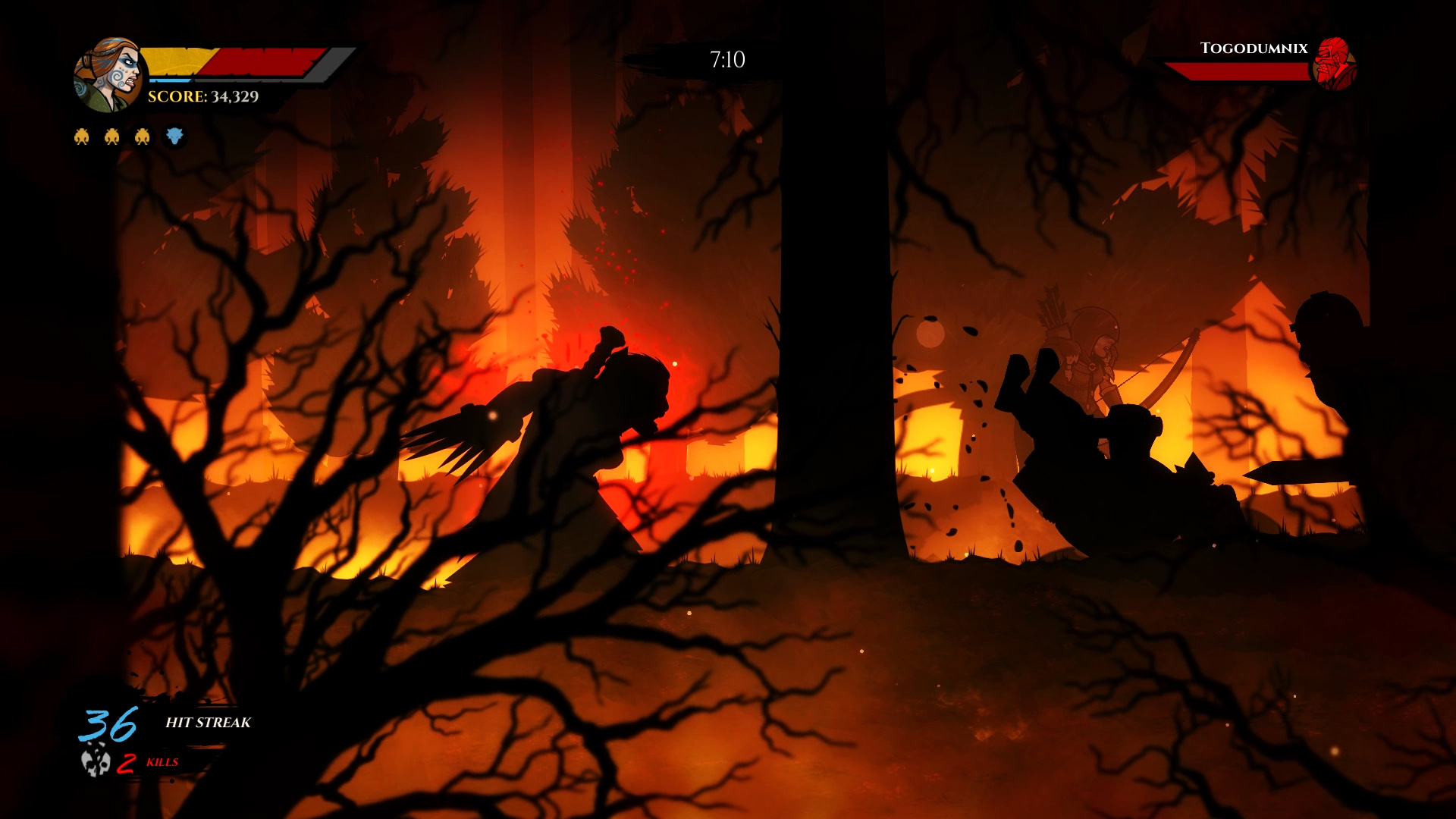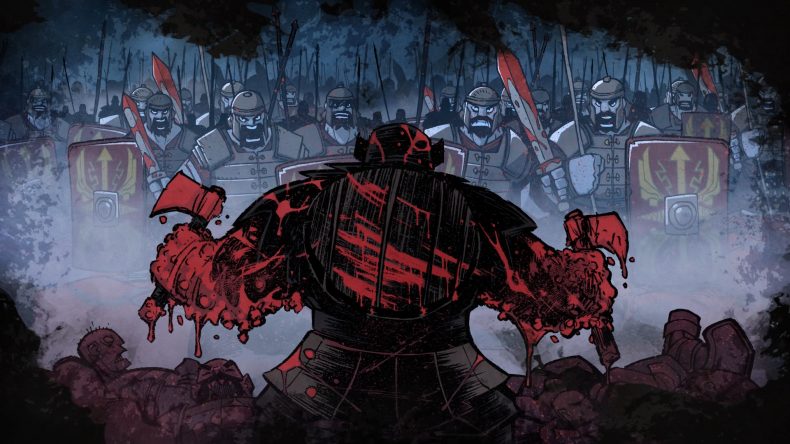January 31, 2018
If you know your British history, you may have heard of the legendary Ninth Legion, a Roman army that vanished apparently without trace while marching through the highlands of Scotland (or Caledonia, as the Romans called it). It’s one of those legends that probably has a very straightforward explanation, like they took a wrong turn and fell off a cliff, or they all decided that fighting the Scottish and their four-foot claymores was a bad idea, so they grew their beards out and went native. Either way, it’s an interesting myth, and one that has been explored a few times in film and literature, but not all that often in games.
Enter Wulverblade, daubed in blue woad, screaming and kicking and swinging a battle-axe. This side-scrolling hack ‘em up harkens back to days of old – by which I mean 1989, when Golden Axe was the greatest game I had ever played. To be honest, the similarities between Wulverblade and SEGA’s coin-op classic pretty much end where they begin. It may be retro in its concept, but Wulverblade is every inch a modern game.

In this version of history, the 5000-strong Ninth Legion were decimated by three very angry Celtic warriors: Caradoc, Brennus, and Guinevere, who make up Wulverblade’s roster. In compliance with The Rules, they follow the standard template, so Caradoc is the all-rounder, Brennus is the slow tank, and Guinevere is the squishy quick one. Who you choose doesn’t have much bearing on the campaign (although it is markedly easier to survive as Brennus), so the choice really comes down to personal preference, especially during multiplayer games.
Aesthetically, Wulverblade is strikingly attractive. The decision to present the brutal, blood-soaked action in such a colourful, cartoony style is genius. The fluidity of motion is immediate and, I hate to say it, visceral, and spreading blood and limbs across walls and floors as you slice through hordes of enemies is incredibly cathartic.
Each of your blue-dyed nutjobs has a standard attack mapped to X and a heavy attacked mapped to Y, though the latter is only available if you’re carrying a second weapon – none of which last for very long. You can also pick up dropped swords, daggers, hammers, and axes, as well as heads and arms, to hurl at the oncoming enemy. As you fight you’ll build your Rage, which can be unleashed by hitting the right button at the right time. This short burst of attack speed and damage turns the screen red and is always satisfying to use, but it takes a while to fill the meter.

Likewise is the special attack each character has access to, which takes a long time to become available but is essentially a smart bomb with wolves, as you summon a pack of lupine companions to tear the throats from the enemies on-screen (it doesn’t kill bosses instantly, but it’s a handy trick to pull out when you need to dish out some quick damage).
At the end of each campaign area you’ll face a boss, which are really just large damage-sponges with wider areas of effect than standard enemies. Whereas I usually look forward to boss fights, Wulverblade’s end of level rucks are fairly by-the-numbers for the most part, and don’t do an awful lot to change up the hacking and dodging.
Collectibles come in the form of temporary heavy weapons and artwork, often linked to some real-world facts about the item, area or time period. It’s a nice touch, and one that feels natural rather than at odds with the cartoony animation and OTT violence. Learning about the period is both interesting and welcome, and highlights the care and effort taken by the developers to create something truly memorable.

Outside the campaign is an arena mode, which sees your hero battling waves of enemies and hovering up health items whenever they’re available. Like the campaign, I found the frequency of health drops to be pretty inconsistent, which meant I was often on the ropes waiting for a way to heal. It’s not a massive problem, but I did find I spent too much time fretting over my red health bar and worrying that the next hit would be my last – especially as it can be incredibly hard to avoid incoming damage. You can block (defaulted to B but mappable to LT instead, which I did), but turning left to right isn’t always as immediate and fluid as everything else. It makes the Arcade Mode much harder, as this is basically the campaign but with only 3 lives before Game Over. Replayability comes in the form of Leaderboards, as you’re graded at the end of each stage by kills, speed and pick-ups.
Wulverblade is a solid beat ‘em up with heaps of old school spirit, only really hampered by some stiff side-switching and an occasionally cluttered floor that can lead to you picking up a severed head instead of that apple you desperately need to somehow heal all your recent knife-wounds. This can also lead to multiplayer games being a little hard to keep up with, though you can usually mash your way through most encounters. It’s nothing hugely original, but Wulverblade certainly has heart and style.
Great art style
Full of history
Cathartic
Play area can feel cluttered
Not particularly original
Movement controls can feel a bit stiff
It’s nothing hugely original, but Wulverblade certainly has heart and style.






